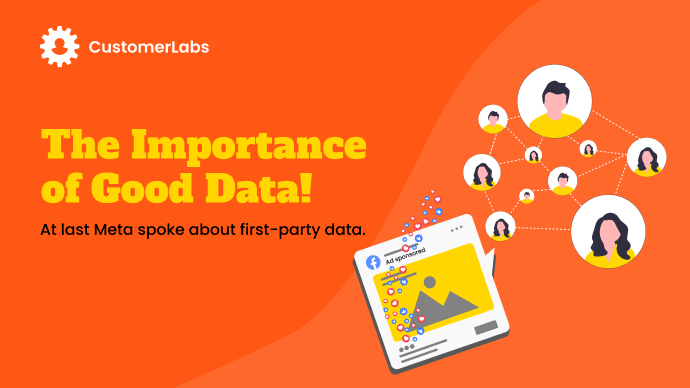
In the realm of the digital world taking a new revolution, it has become important for people to comply and make use of the digital space to flourish their business. Many businesses started advertising their products and services through social media platforms. But, there were some intricacies faced by marketers/advertisers in the same. Dive into the blog to know about the problem and how it was addressed by one of the social media giants – Meta.
Data, data, data has become the new mantra for marketers today.
For over a decade now, it has been evident that marketers are making use of Meta’s ad platform to get more user data and conversions. But that’s being challenged now due to the rising concerns on user data privacy, ad blockers, regulatory policies such as GDPR and CCPA among others. This has led to an incomplete picture of the customer journey.
The Paradigm Shift of Data Privacy!
With GDPR and CCPA ruling on one hand, in 2021, there emerged another issue of iOS14 update, which gave users the power of opting out of tracking. This has brought a paradigm shift in terms of users data collection, leading to difficulties for marketers in retargeting.
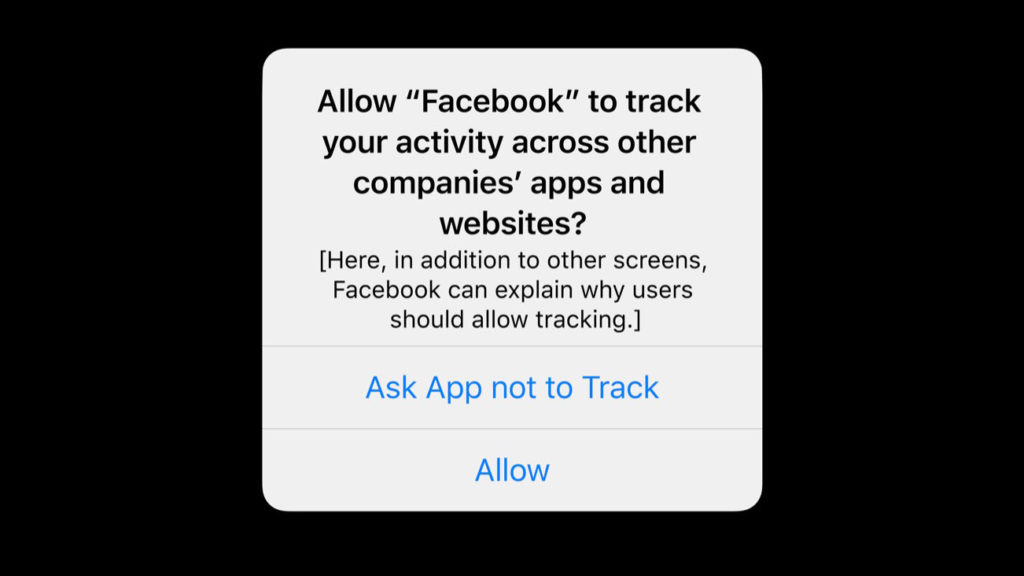
All these issues have been constantly bugging Jones, a product marketer, with incomplete questions, and it has now become harder for him to reach people when they are most likely interested in products or services. Earlier, to drive conversions, Jones used to easily share data through Meta pixel and improve their performance. But with constantly arising changes in compliance with policies, it has become difficult to get users’ data from pixel.
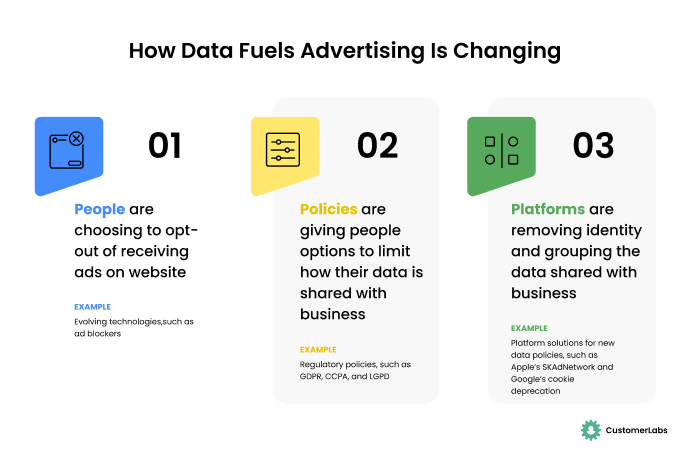
What’s the Solution?
By introspecting all these issues, with complying to policies and regulations, Meta started working in the back-end technologies with privacy enhancing techniques that use aggregated or anonymous data for businesses to reach audiences who will be interested in what they offer.
Marketers like Jones around the world are facing the same issue, but this was addressed by Meta in a seamless way.
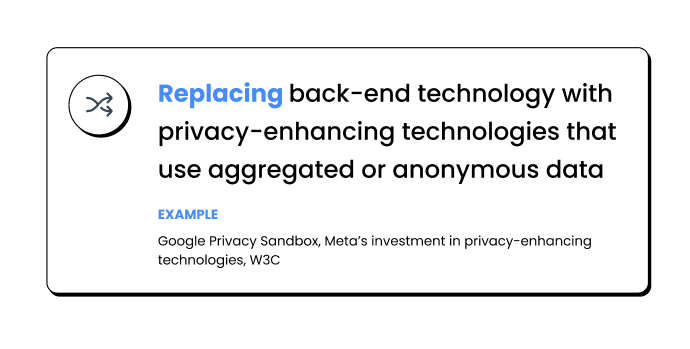
The Reign of First-Party Data!
Meta has built robust tools to enable watching of first party data in a secure and compliant way!
The first-party data is all types of interactions between a user and any businesses, be it in online or in-app store transactions among others. Basically, they are the first hand information of your website visitors. The users data will be collected from various platforms (i.e.) website, social media platforms, and CRM.
Anonymous Data? Really??
Just so you know, first-party data is more than just names, email ids or phone numbers of users. It goes beyond and provides you with firsthand information about anonymous website visitors who might have landed on your website and have not provided any information.
These are basically your mid-funnel audiences – your anonymous website visitors. It is also said that generally 98% of website visitors are anonymous.
Now, it has become important for marketers to think beyond just tracking conversions and to focus on tracking high-intent anonymous website visitors and train the ads algorithm by sending audience signals based on various interactions done by users on websites or apps. With this, the algorithm can then distinguish between valued customers and less valued customers.
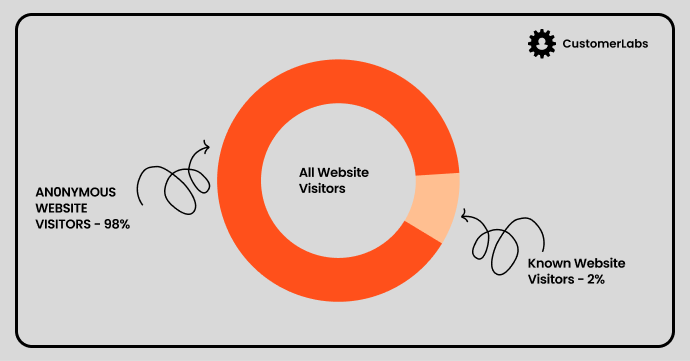
Okay! What does Meta really have for this?
For this, Meta is providing different data sources and data integrations that businesses need to feed their advertising campaigns.
Under data sources, Meta Pixel and SDK used to track activities on websites or apps. Catalog products can be utilized to share product name, description, quantity and sales among others. Offline transactions utilizing offline products will be feasible to share in-store purchases, offline purchases among others. There are specific integrations also available for CRM in this platform.
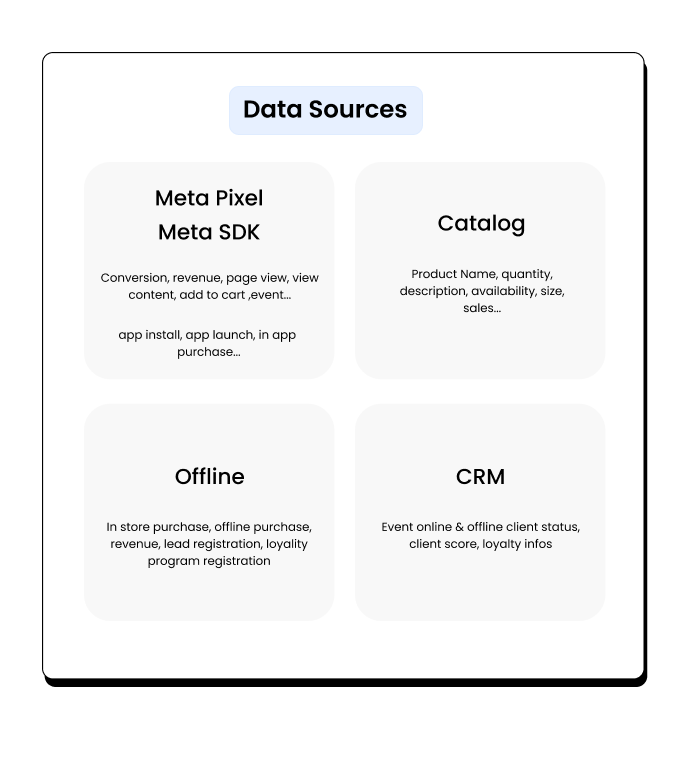
In terms of data integration; MMP (Mobile Measurement Partner) is available to collect similar information than what we collect from SDK. Along with this, server-side mechanisms are also available with Conversions API/App Events API.
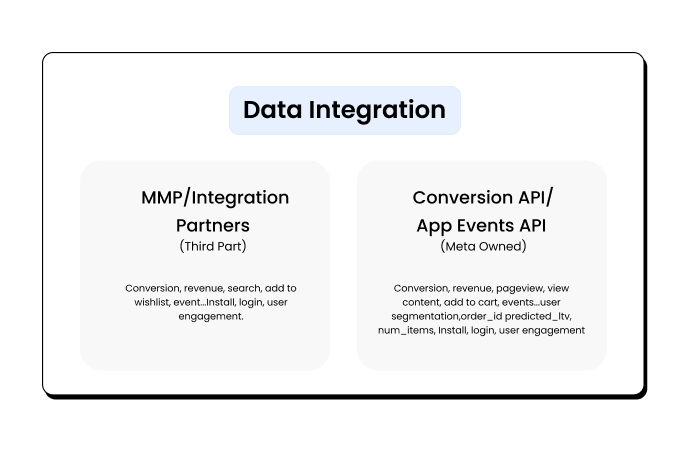
Conversions API plays a major role in providing user data to Meta. The solutions provided are ample, let’s take a look;
The Power of Conversions API
Meta has introduced Conversions API to create a direct connection between your marketing data and Meta. The Conversions API, with broader focus, can send app information, offline store information and website information of users.
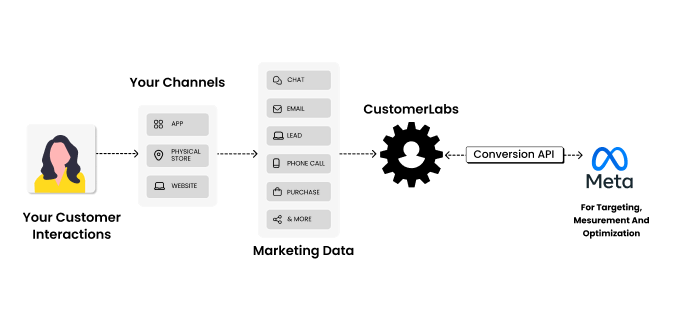
“After deploying Conversions API in addition to Facebook Pixel, there was a decrease in cost per result by 13% and we also witnessed that the CPA is 30% better than just with the implementation of Pixel alone.” said Mike Bettan, Marketing Science Partner at Meta in a webinar.
But it is important to assess all these data and integrations by giving an Event Match Quality score for each integration. “For EMQ above 7, we have seen 35% incremental conversion attributed to campaigns”, added Mike.
Looking to Deploy Conversions API? We Are Official Partners of Meta!
Deploying CAPI is definitely not an easy task. We at CustomerLabs are official partners of Meta to deploy CAPI with our specialized integrations to help you by leveraging the full potential of Conversions API for better tracking and optimization of campaigns within a few clicks and ‘No Code’ required.
The Conversions API can be deployed with 3 different methodologies to connect your marketing data with Meta.
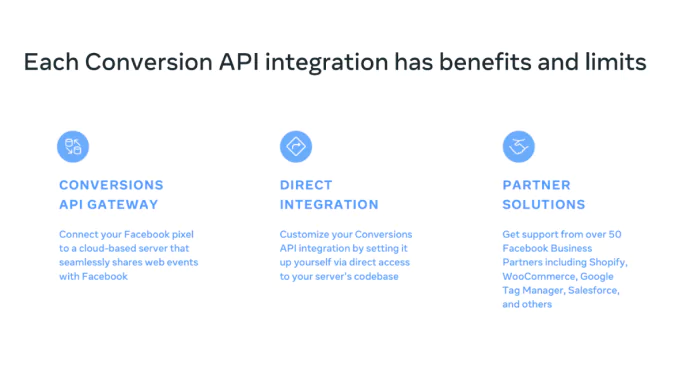
Conversions API Gateway: If you have a cloud infrastructure like Amazon Web Services, you can connect your pixel with it and deploy CAPI. This is used to send web events through a reliable server to server connection, to Meta.
You as an advertiser will be able to directly set up and implement CAPI yourself via direct access to your codebase.
Meta has different types of partners solutions for your business to connect a Conversions API with your marketing data and Meta.
Power of First-Party Data in Marketing
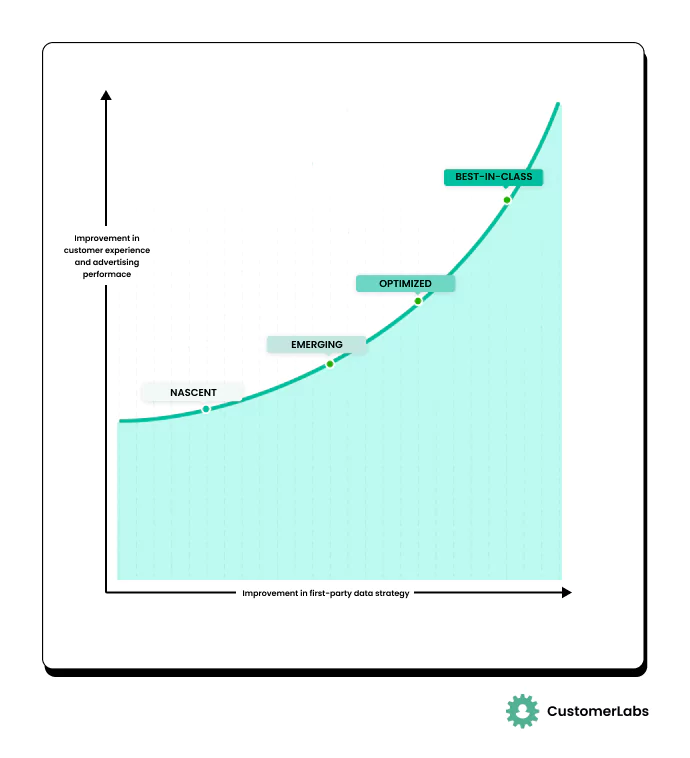
With first-party data taking a new digital approach, it is important for businesses to know how collecting customer data helps you in your marketing efforts. Let’s see the different stages of the first-party data strategy maturity curve.
There are 4 levels of improvement in the first-party data strategy’s maturity curve.
- Nascent: In this stage, advertisers would have less awareness of first-party data strategy with limited actions taking place to improve.
- Emerging: Starting to develop the first-party data strategy by educating internal teams to take necessary steps and actions.
- Optimized: Inside the organization, cross-functional collaboration will be taking place to strengthen the data governance. In this stage, there will be some ad platforms improving in performance using first-party data strategy.
- Best-in-Class: Establishing first-party data across all ad platforms and executing coordination within teams, and activating more advanced tactics.
With these stages, let’s see how First-Party Data helps to optimize the marketing funnel.
Harnessing the Power of First Party Data by Optimizing Marketing Funnel
There are three parts of the marketing funnel and first-party data plays a different role across the funnel. Understanding how first-party data can be leveraged to improve prospecting, optimization and re-engagement strategies can greatly benefit a business.
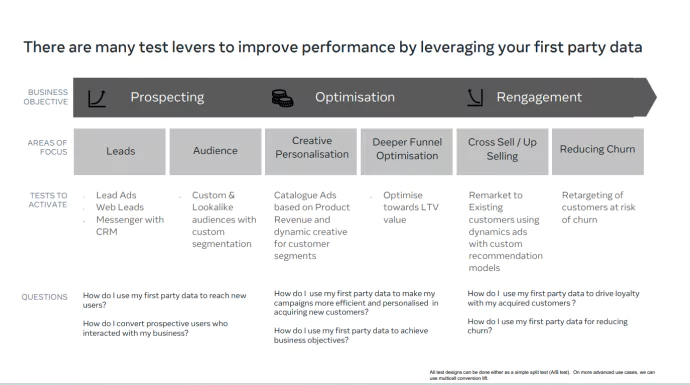
Prospecting: Targeting the Right Audience
At the top of the funnel, prospecting involves finding potential customers for your business. It is vital for a business to identify and acquire new customers more efficiently.
- Here, the first type of test to be leveraged is the lead ads by integrating customer data with your CRM, you will be able to find leads with high profitability of converting or making a purchase.
- The second testing can be done through lookalike audiences and these are based on customer segmentation that you define. This allows you to define customer profiles that value the most to your business.
Let’s see how Fateh Improved its Lead Quality through Lead Ads? Let’s see…
From witnessing a drop in achieving qualified leads, Fateh, an education consultancy, partnered with CustomerLabs to optimize quality of leads by collecting first-party data, implementing CAPI and integrating their CRM with Facebook.
For this, they started making use of Lead Ads to find new prospecting leads with high profitability of converting or making a purchase. Along with this, they also focused on targeting lookalike audiences to get to the ‘lead to opportunity’ stage.
Optimizing towards this, Fateh saw a;
- 200% Increase in Lead to Opportunity Stage.
- 3X Decrease in Cost per Opportunity.
- 50% Decrease in Junk Leads.
Optimization: Tailoring the Campaigns
Moving to the next part of the funnel, comes optimization. Here, there are two types of tests; Catalog Ads and Deep Funnel Optimization.
- Catalog Ads are optimized for product revenue and are coupled with dynamic creatives. They deliver the most profitable products to the most relevant customers. This approach enhances customers’ experience and boosts conversions.
- The second type of test is deep-funnel optimization focusing on long-term customer value for your business through optimization.
Let’s take a look as to how W for Woman, a fashion apparel brand achieved this!
For W for Woman, we wanted to optimize the full funnel of the campaign and optimize the campaign for the high-intent users and eliminate the low-intent users and overlapping users to reduce the cost.
We created two audience segments for W for Woman and who showed interest but did not convert yet.
- Product viewed more than 2 times in the last 90 days but not purchased in the last 30 days
- Added to the cart in the last 90 days but not purchased in the last 30 days.
By activating these anonymous website visitors of those who viewed content and added to cart, we are bringing the traffic back to the funnel.
And immediately after that the DPA ads kicking, for the bottom funnel audience which improves the purchases.
The key insights we saw are:
- 2X Times Increase in ROAS.
- 35% Reduction in Customer Acquisition Cost
Re-engagement: Improvising Customer Loyalty
At the final stage of funnel lies the critical aspect for a business, re-engagement. This ultimately focuses on building a long-term relationship with existing customers and reducing churn. There are two tests to achieve this; remarketing campaigns with dynamic ads and reducing churn.
By analyzing customers preferences, you can run remarketing campaigns that cross-sell or upsell to your existing customers, to encourage repeat purchases.
With the retargeting techniques, you can effectively reduce churn by identifying and targeting customers at the risk of churning.
Let’s again see how W for Woman utilized re-engagement!
Further to the deep funnel optimization, for W for Woman, we wanted to engage with customers personalized and improve their lifetime value.
We created audience segments in three phases:
- High value customers – Purchased AOV 4000 in the last 90 days. Here we tried to upsell them with accessories or related products.
- People who purchased top wear in the 30 days cross-sell with bottom wear and many more.
- Value based lookalikes for the top funnel to drive more traffic who are similar to your customers.
The key results:
We were able to provide incremental revenue by influencing the mid-funnel users and contribute up to 15% to their revenue.
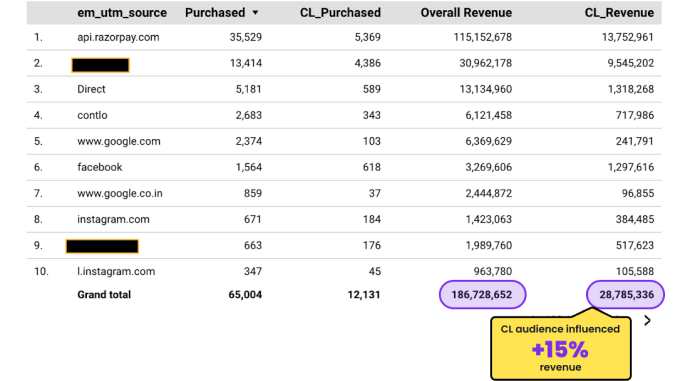
Having said that, here are two best practices that are recommended;
- Exclusions: Always make sure we add our exclusions right. When targeting the added to the cart or view content, exclude the purchasers from the audience. And exclusion audience size depends on the AOV of the product. Higher AOV, higher the date span for purchasers exclusion list. This avoids overlaps and spending.
- Incremental revenue: The attribution on each platform is different. For most it is last click attribution and for some it is first-click and few are data driven.
Relying just on one ad or ad set or campaign to determine the winning campaign and toggle-off the other is never the case. As far as Facebook and other ad platforms are concerned, one campaign feeds the other campaign with the high-intent audience. Hence, relying on one campaign’s ROAS do not do justice for optimal results.
Finally it’s Testing & Learning!
There’s a test and learning framework to answer your questions. This framework focuses on helping your businesses to enrich first-party data across the marketing funnel. With Meta, there are two main mechanisms.
One is A/B testing, involving dividing audiences into two groups, and presenting each group with different ads and strategies. On the other hand, in Conversions Lift, users are split into two groups; control and treatment group. The control group what would have happened if we didn’t run a particular strategy in ads. The treatment group is the applied strategy that you want to really test the effectiveness of.
Conclusion
“For marketers, it’s important to combine privacy challenges with the need to leverage advertisers first party-data in order to deploy more sophisticated campaigns strategy and generate better performance”, says Mike Bettan, Marketing Science Partner at Meta.
With this it is important for marketers to understand the following;
- Shift in Mindset: Marketers should go beyond looking just at ROAS and shift their mindsets to prioritize long-term success of the company.
- Make decisions by utilizing first-party data to gain insights about customers/users behaviors, preferences and engagement state to succeed in their ad campaigns and ROI.
- Recognize the value of incremental revenue which is important for sustained growth and customer loyalty of a business.
Read the full report on “The Importance of Good Data“




